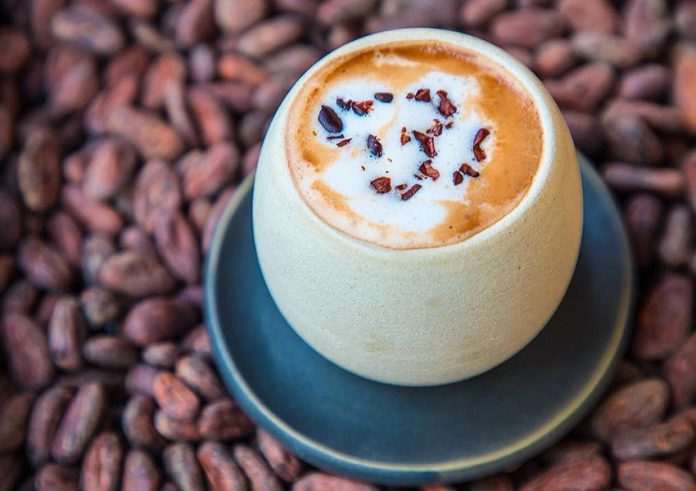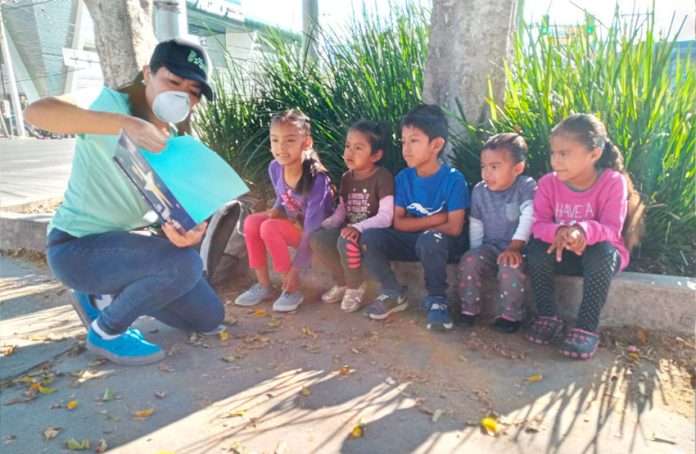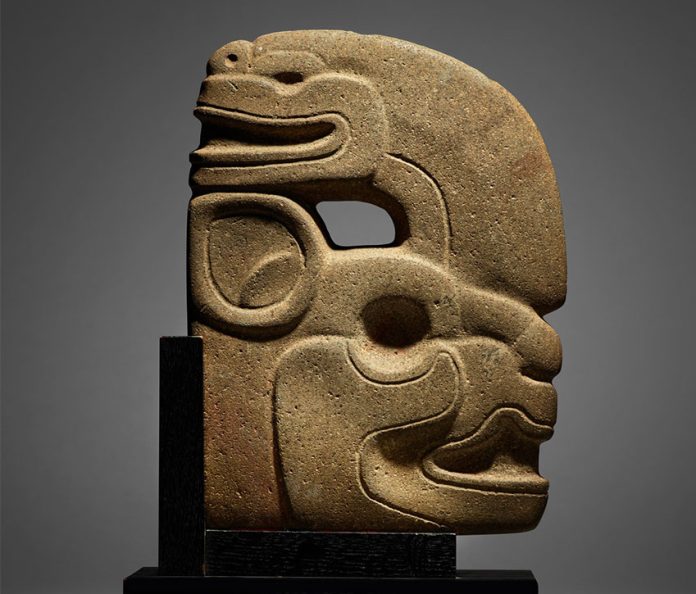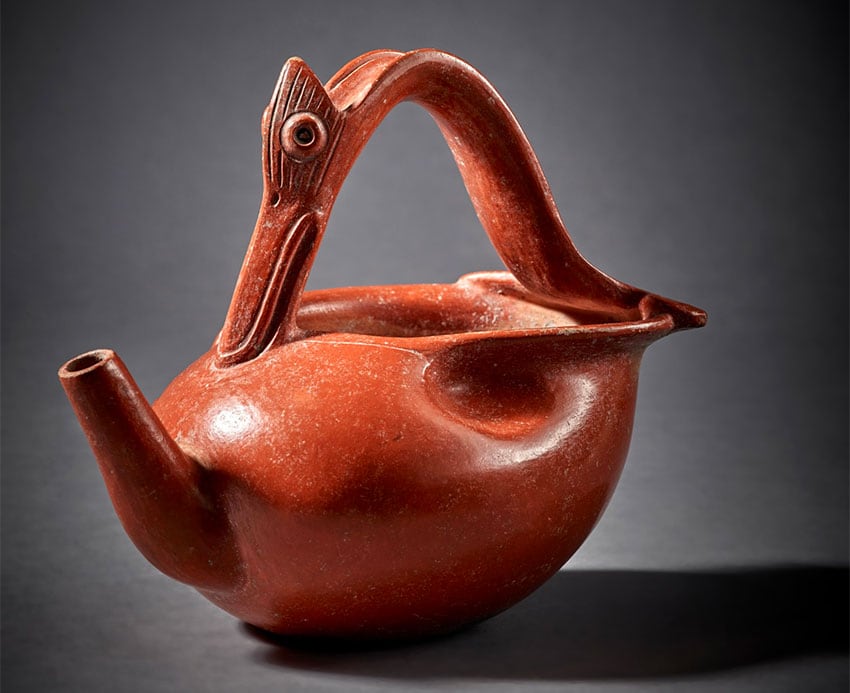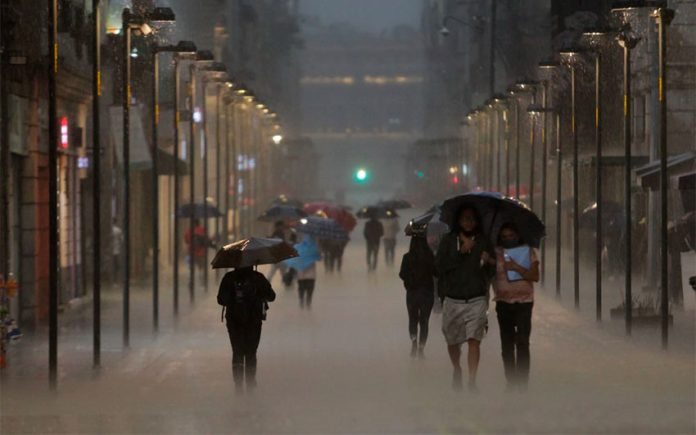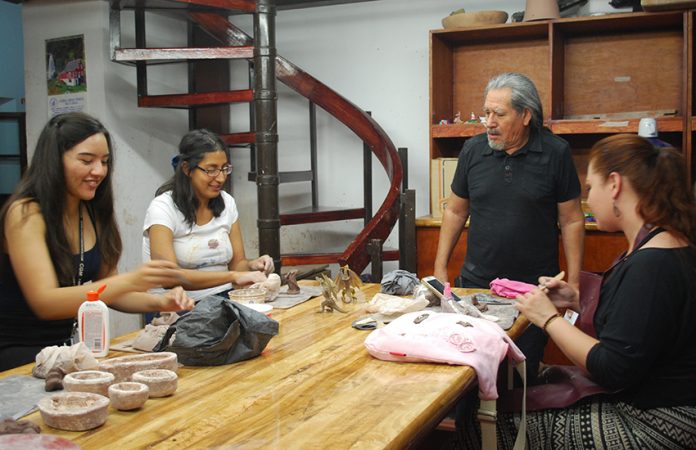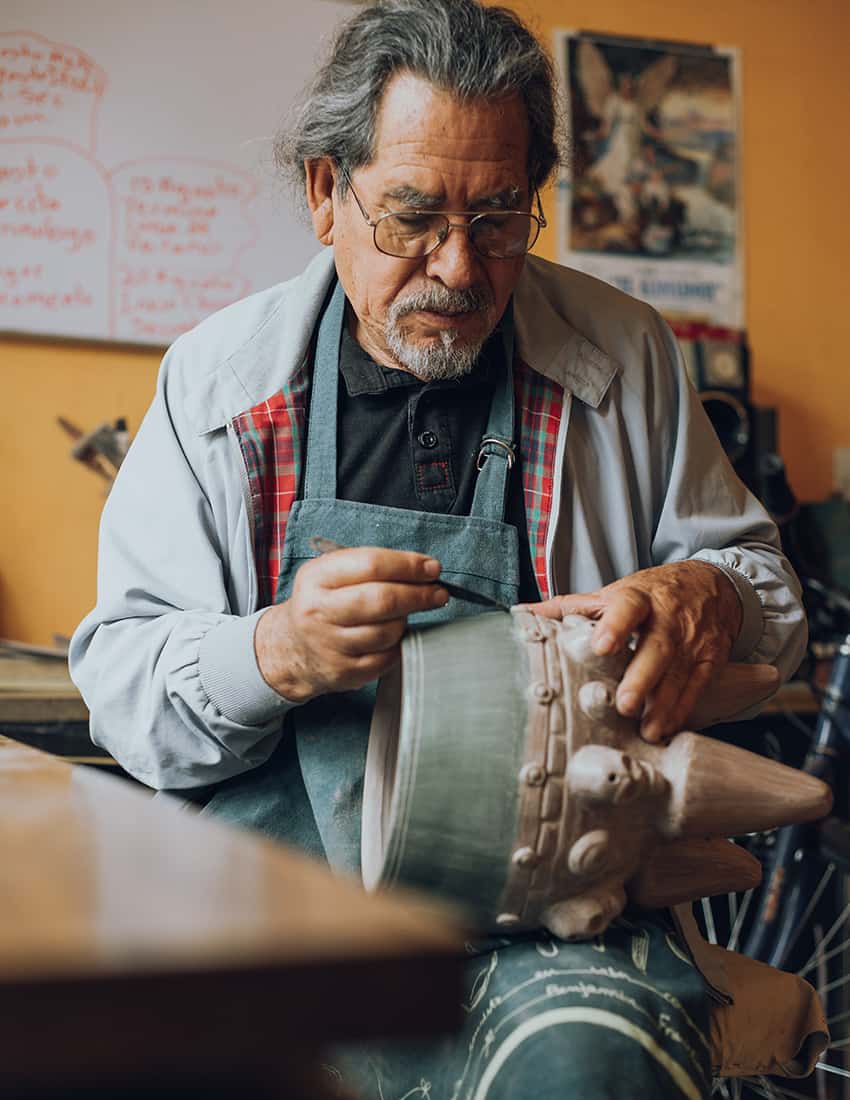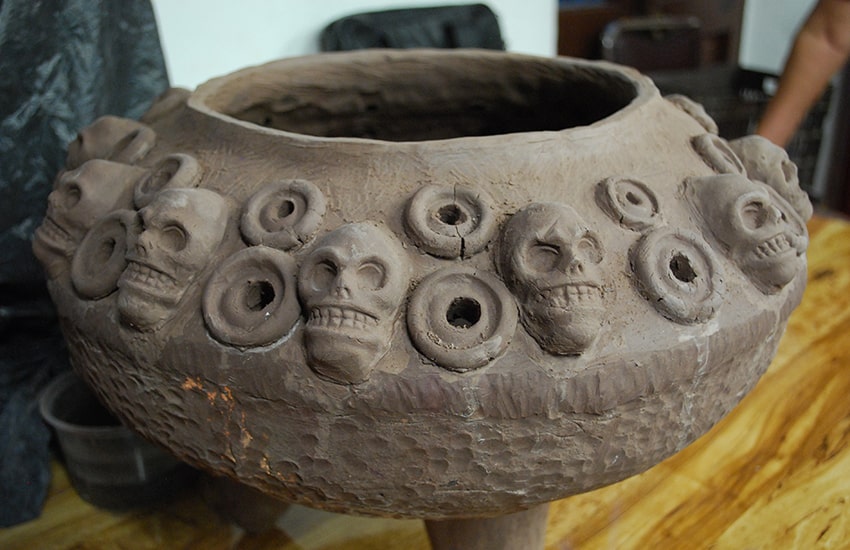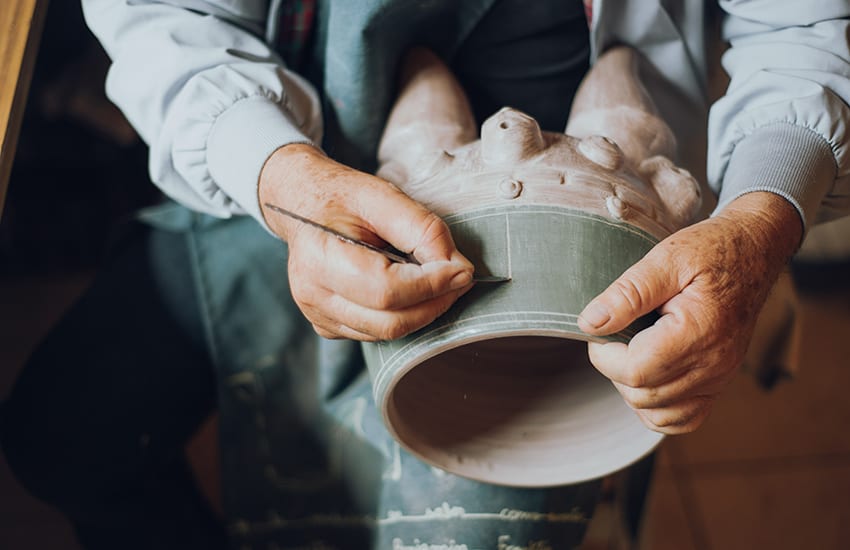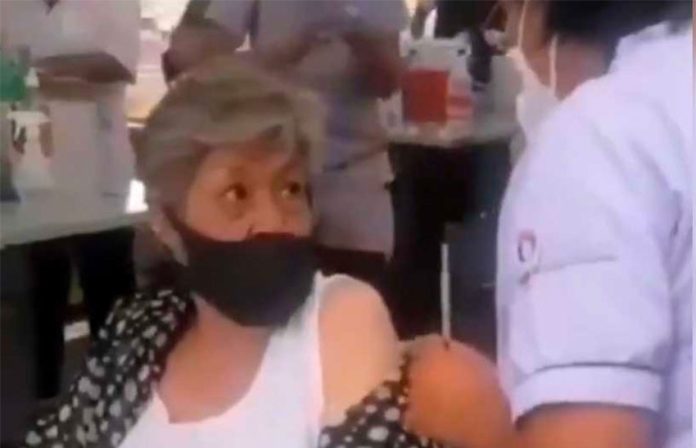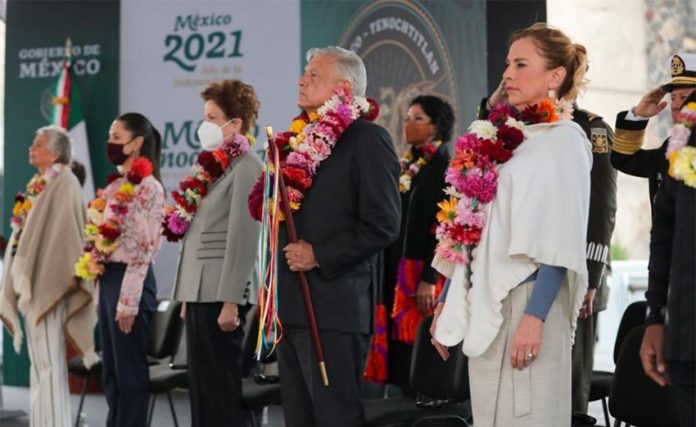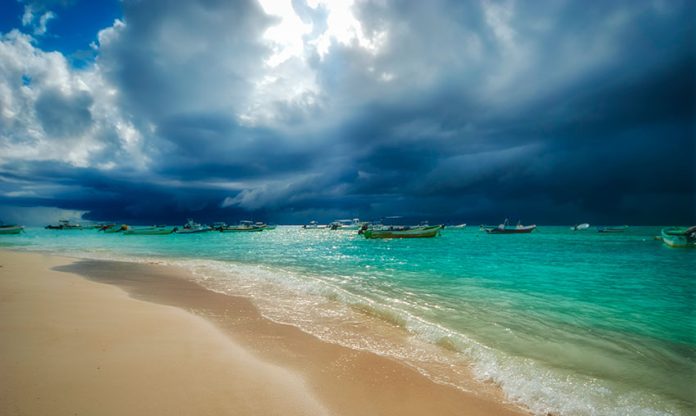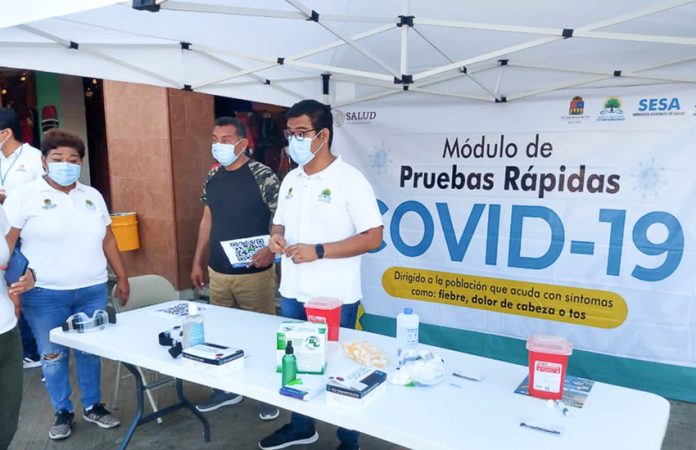It’s a far cry from what 88-year-old expat and artist Helen Bickham remembers about visiting San Cristóbal de las Casas, Chiapas, in the 1960s: back then, she found an isolated town, a village even, somewhat hostile to outsiders.
Five decades later, “San Cris” is not only a lot bigger, its streets are filled with shops, foreigners and cafes to rival anything in Europe or the United States.
But to say that the influx of tourists and expats has created a culture of drinking good coffee and chocolate in San Cristóbal would not be accurate. They have had a definite effect, but what is found today is based on what has been accomplished here long before the Zapatista Revolution put Chiapas into the world’s consciousness.
Let’s start with chocolate: in beverage form, it had an important place in Mesoamerican cultures long before the arrival of the Spanish. After the colonial era began, the Spanish eagerly sipped the frothy hot liquid as well.
There is a great story that says that in 1625, the bishop of San Cristóbal, Bernardino de Salazar, was poisoned by some upper-class ladies because he tried to stop them from serving and drinking chocolate in church during Mass. True? Who knows? But a good story to show how hooked the Spanish got.

Coffee would later replace hot chocolate even in Chiapas for the vast majority of adults. When Kiki Suárez started her La Galería cafe in 1979, she says, chocolate was not that popular. But it has since reemerged.
Most cafes in San Cristóbal serve at least one version of the drink. Although Oaxaca is better known for hot chocolate, San Cristóbal’s selections and preparation are more varied and, in my opinion, superior.
Oaxaca chocolate is invariably mixed with large quantities of sugar. In San Cristóbal, chocolate comes with varying levels of it, from something similar to that of Oaxaca (50% sugar) to preparations that are 80% and even 100% cacao.
Pro tip: if there is sediment at the bottom of your chocolate cup, you had the real deal, not Nestlé’s fake Abuelita, so don’t let that turn you off.
There are businesses in the city that focus solely on preparing and selling local and regional chocolate. They range from traditional artisanal preparations such as those available from Otoch Chukwá, which claims to be the first modern chocolatería in San Cristóbal, to completely modern operations such as Jangala: Cacao y Selva (formerly Alkymia), using up-to-date scientific methods in cultivation and processing as part of the global bean-to-bar movement.
Both businesses have branched into the creation of gourmet eating chocolate, a market that has been ignored by most Mexican chocolate producers. One reason for this is that cacao beans are traditionally coarsely ground in Mexico because of its history as a drink and the use of stone mortars called metates. Fine grinds for candy were developed in Europe. Despite having introduced the world to chocolate, Mexico cannot compete with Asia or Africa for the mass production of the bean. Its future lies in specialty niche markets, says Julio Salazar of Jangala.
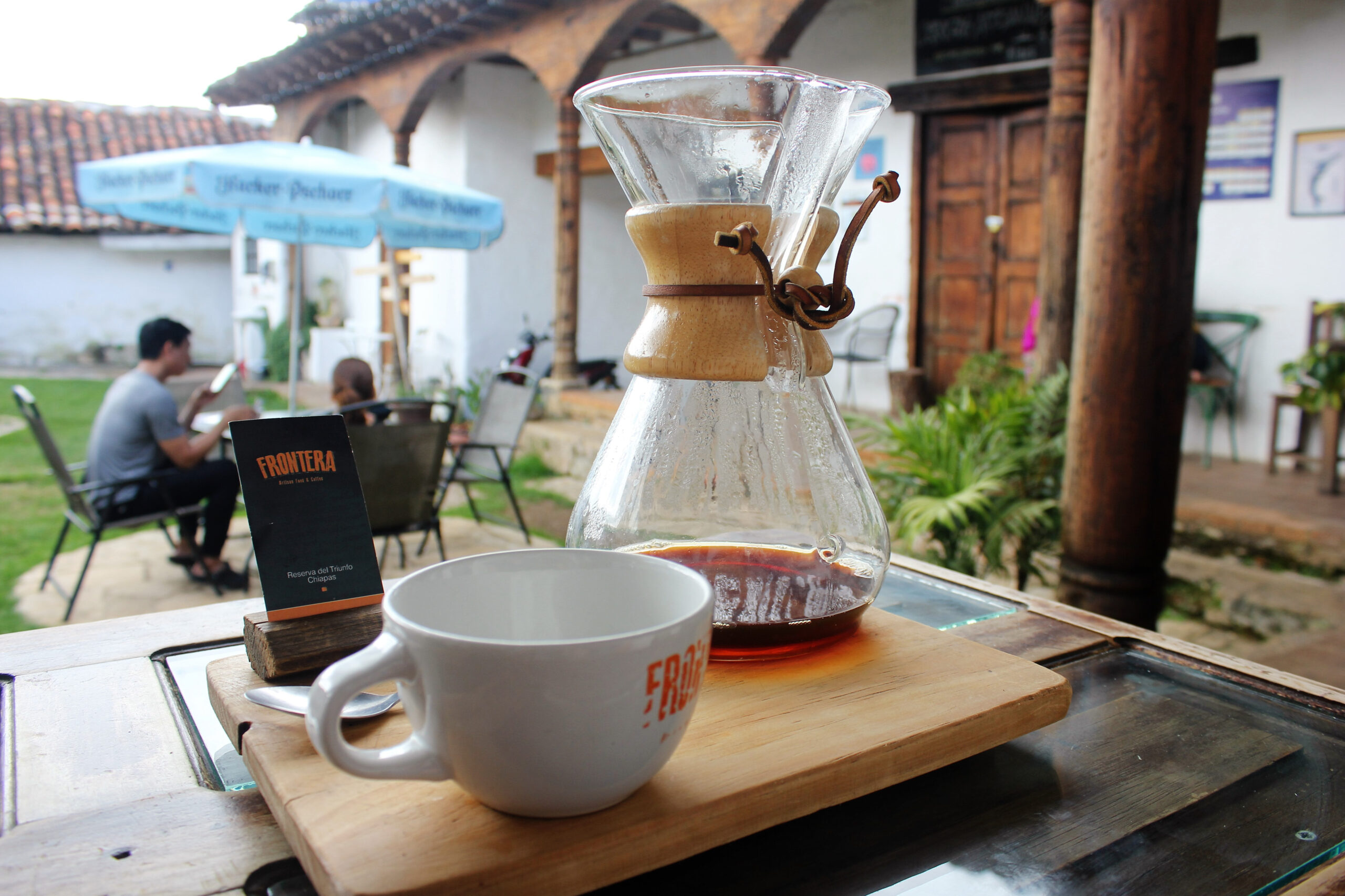
Coffee is neither native to the region nor has the long history in Mexico that chocolate has. But in the early 20th century, the Mexican government introduced and encouraged coffee cultivation in Chiapas and other parts of Mexico to give people living in certain impoverished areas a cash crop. Its popularity with growers was not just because it brings in money. Growers and other locals found they liked the caffeine jolt like the rest of the world.
Until recently, much of the preparation of coffee followed that of chocolate, with beans roasted on the same comales used for tortillas and ground in the same metates and molcajetes (mortar and pestles) used for corn and salsas, says David Benjamin Briones of Black Dragon Coffee Center in the city. The resulting brew, he says, was not very good as roasting was at best uneven.
Kiki Suárez agrees. The main reason she opened La Galería (Today named Kikimundo/Santa Nagual) was that she missed the quality coffee and cakes she enjoyed in her native Germany.
It is now a given that those in San Cristóbal have access to good quality, affordable chocolate and coffee. Expats may not come to live in the city because of coffee and chocolate, but most find it an added bonus.
The growth of the city, tourism and an expat community has meant an explosion in cafes in San Cristóbal. Briones says that once locals tasted coffee prepared with better techniques and equipment, they demanded quality as well.
The city now hosts cafes not only in the downtown tourist corridor but in other neighborhoods where they serve both coffee and chocolate.
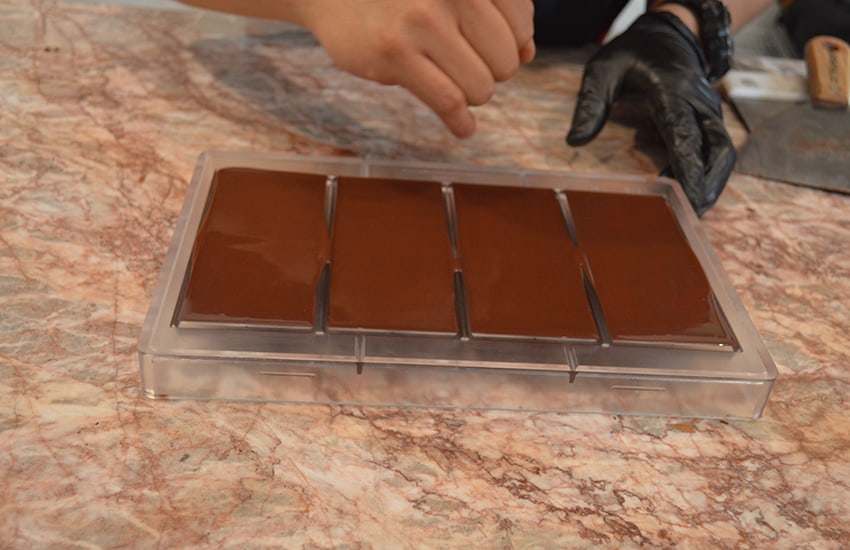
Cafes in San Cristóbal do have a number of things in common: almost all are interested in the local ecosystems and populations, and many are also supportive of the arts. Many of these businesses are owned by people from outside Chiapas, including more than a few foreigners. Perhaps this is because, as Briones says. “Chiapas’ profile as a coffee producer is much higher than it used to be, even from 10 years ago.”
There is a strong belief here that both Chiapas chocolate and coffee are world-class and will get their due.
Leigh Thelmadatter arrived in Mexico 18 years ago and fell in love with the land and the culture in particular its handcrafts and art. She is the author of Mexican Cartonería: Paper, Paste and Fiesta (Schiffer 2019). Her culture column appears regularly on Mexico News Daily.
